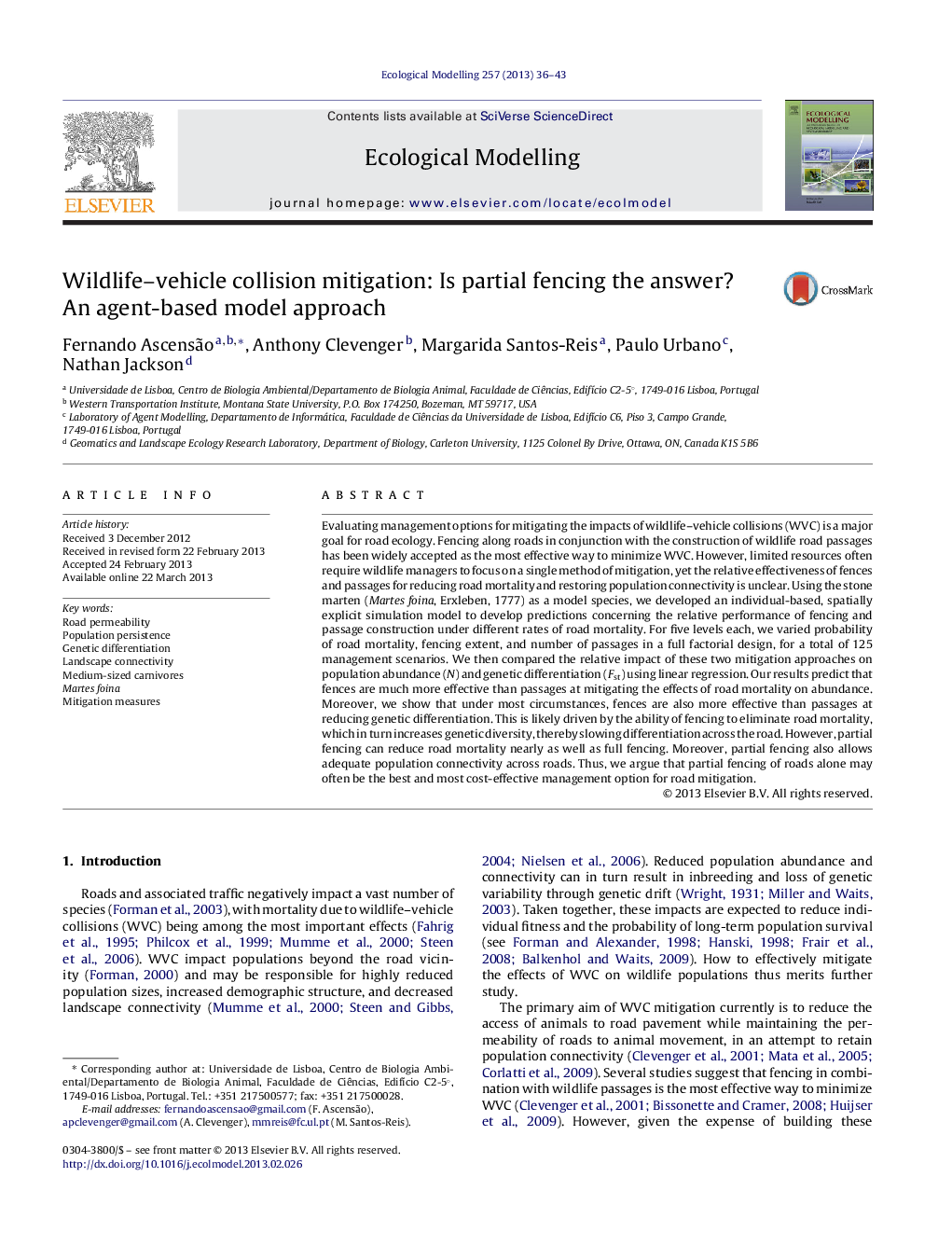| Article ID | Journal | Published Year | Pages | File Type |
|---|---|---|---|---|
| 4376126 | Ecological Modelling | 2013 | 8 Pages |
Abstract
Evaluating management options for mitigating the impacts of wildlife-vehicle collisions (WVC) is a major goal for road ecology. Fencing along roads in conjunction with the construction of wildlife road passages has been widely accepted as the most effective way to minimize WVC. However, limited resources often require wildlife managers to focus on a single method of mitigation, yet the relative effectiveness of fences and passages for reducing road mortality and restoring population connectivity is unclear. Using the stone marten (Martes foina, Erxleben, 1777) as a model species, we developed an individual-based, spatially explicit simulation model to develop predictions concerning the relative performance of fencing and passage construction under different rates of road mortality. For five levels each, we varied probability of road mortality, fencing extent, and number of passages in a full factorial design, for a total of 125 management scenarios. We then compared the relative impact of these two mitigation approaches on population abundance (N) and genetic differentiation (Fst) using linear regression. Our results predict that fences are much more effective than passages at mitigating the effects of road mortality on abundance. Moreover, we show that under most circumstances, fences are also more effective than passages at reducing genetic differentiation. This is likely driven by the ability of fencing to eliminate road mortality, which in turn increases genetic diversity, thereby slowing differentiation across the road. However, partial fencing can reduce road mortality nearly as well as full fencing. Moreover, partial fencing also allows adequate population connectivity across roads. Thus, we argue that partial fencing of roads alone may often be the best and most cost-effective management option for road mitigation.
Keywords
Related Topics
Life Sciences
Agricultural and Biological Sciences
Ecology, Evolution, Behavior and Systematics
Authors
Fernando Ascensão, Anthony Clevenger, Margarida Santos-Reis, Paulo Urbano, Nathan Jackson,
